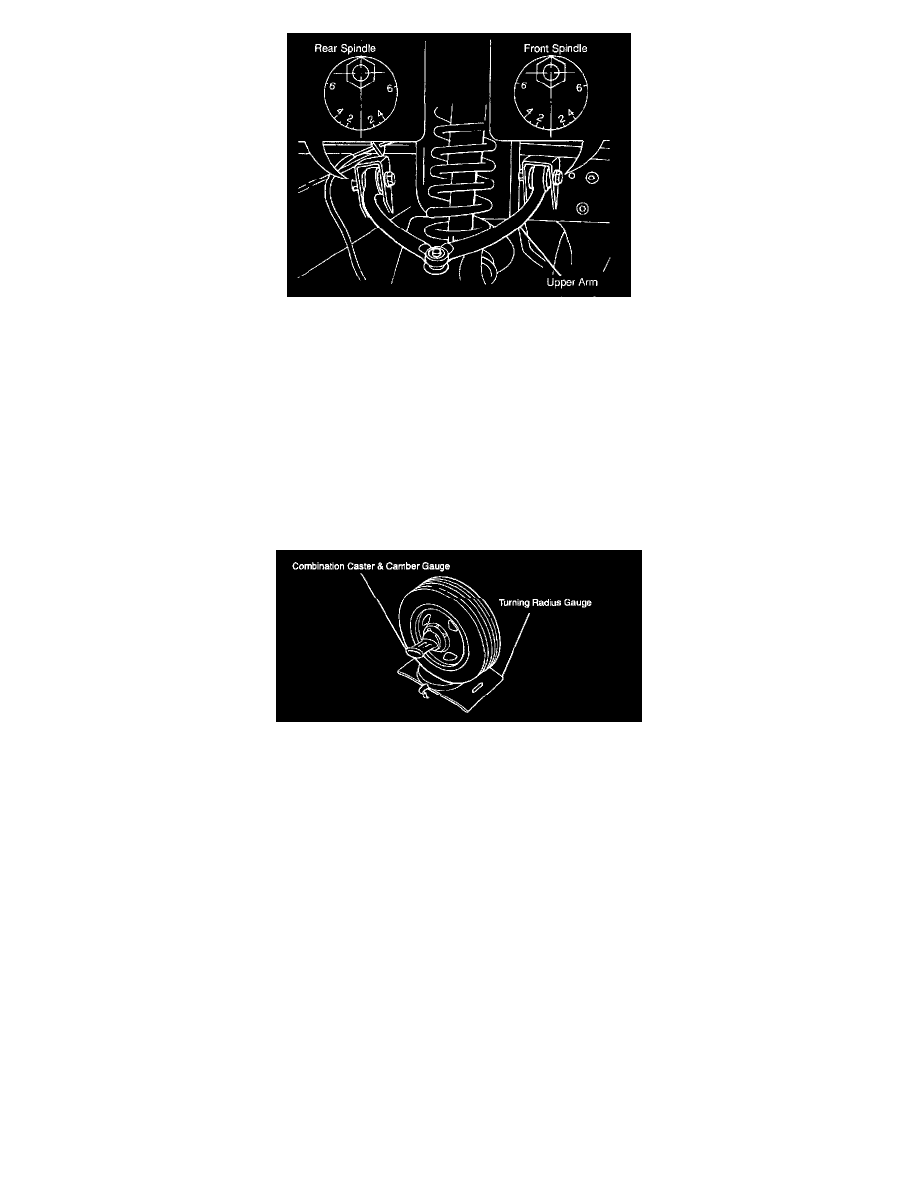Sportage 2WD 2Dr L4-2.0L (2002)

2. Turn the rear spindle counter-clockwise so that the number "2" mark is aligned with the vertical line on the spindle bracket.
Each numerical point indicated on the spindle increases the camber by 0.4 degrees when turned to the vertical line on the spindle bracket.
Caster
Caster is the tilting of the front steering axis (at the top) either forward or backward from the vertical. A backward tilt is "positive"(+) and a forward
tilt is "negative" (-).
Caster influences directional control of the steering but does not affect tire wear. Caster is affected by vehicle height, therefore it is important to keep
the body at its designated height. Overloading the vehicle or a weak, sagging rear spring will affect the caster. When the rear of the vehicle is lower
than its designated trim height, the front suspension moves to a less positive caster.
Inspection
1. Position the vehicle so that the front wheel is on the turning-radius gauge.
2. Remove the front wheel hub.
3. Attach a standard caster gauge to the hub and measure the caster.
Caster:
3.58° ±0.75° (No Passenger Load)
3.85° ±0.75° (2 Passenger Load)
Adjustment
1. Turn the front spindle clockwise until the number "2" mark is aligned with the vertical line on the spindle bracket.
2. Turn the rear spindle clockwise until the number "2" mark is aligned with the vertical line on the spindle bracket.
Each numerical point indicated on the spindle increases the caster by 0.55 degrees when turned to the vertical line.
Toe-in
Toe-in is a measurement of how much the front wheels are turned in or out from a straight-ahead position. When the wheels are turned in (toward each
other at front), the toe is "positive" (+). When the wheels are turned out (away from each other at front), the toe is "negative" (-). The actual amount of
toe is normally only a fraction of a degree. The purpose of toe is to insure that the wheels roll parallel. Toe also serves to offset the small deflections
of the wheel support system that occur when the vehicle is rolling forward. In other words, even when the wheels are set to toe in or out slightly when
the vehicle is standing still, they tend to roll parallel on the road when the vehicle is moving. Toe affects tire wear.
Inspection
1. Position the vehicle on level ground and place the front wheels in a straight-ahead position within ±5 degrees.
2. Measure the toe-in with a standard toe-in gauge.
Toe-in:
0.098 ±0.098 inch (2.5 ±2.5 mm) (No Passenger Load)
0.0 ±0.098 inch (0.0 ±2.5 mm) (2 Passenger Load)
